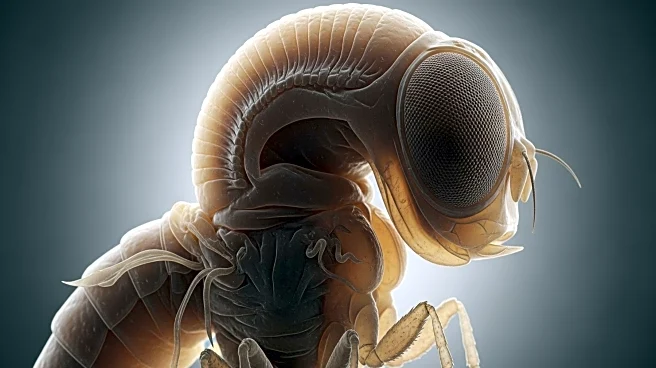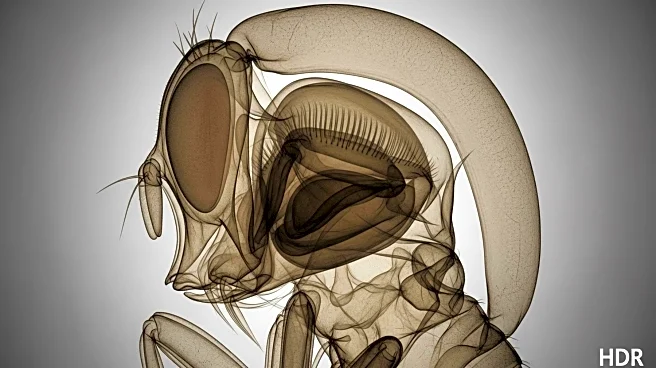What's Happening?
Researchers have identified a small tissue fold known as the cephalic furrow in fly embryos, which plays a mechanical role in stabilizing embryonic tissues during development. This evolutionary novelty, specific to certain fly species, prevents mechanical instabilities in embryonic tissues. The study combines theory and experiment to show how mechanical forces can shape the evolution of new developmental features.
Why It's Important?
The discovery of the cephalic furrow's role in embryonic development highlights the influence of mechanical forces on evolutionary processes. Understanding these forces provides insights into the evolution of developmental features and the genetic programs that govern them. This research contributes to the broader understanding of how physical and genetic factors interact in shaping the development of organisms.
What's Next?
Further research will explore the genetic changes associated with the evolution of the cephalic furrow and its role in preventing mechanical stress during embryonic development. The findings may lead to new insights into the evolutionary mechanisms that drive the development of novel features in organisms.
Beyond the Headlines
The study of mechanical forces in evolution offers a new perspective on how physical factors can influence genetic programs and developmental processes. This interdisciplinary approach has the potential to uncover new evolutionary pathways and contribute to the understanding of complex biological systems.











